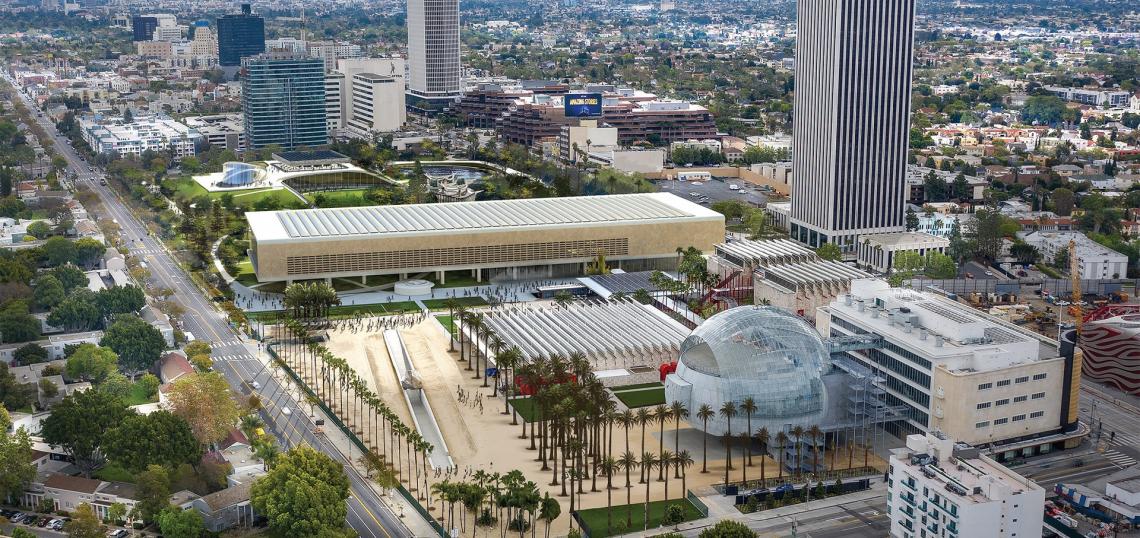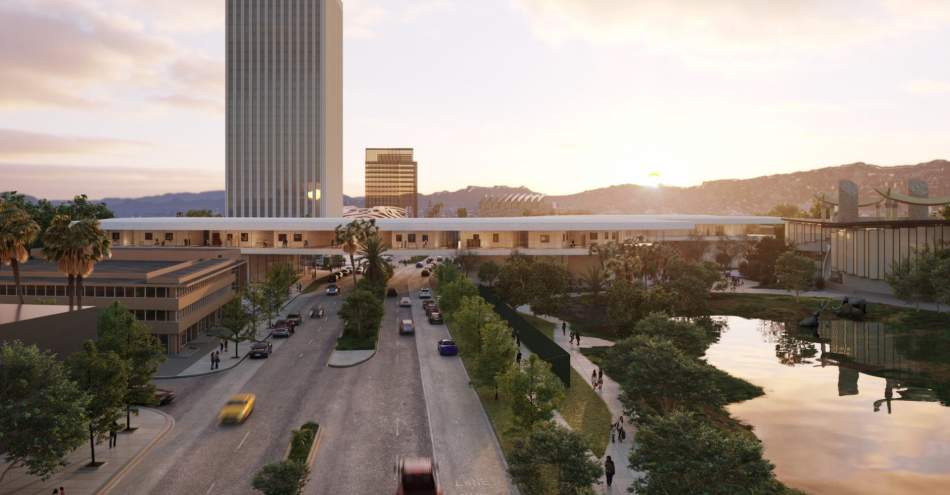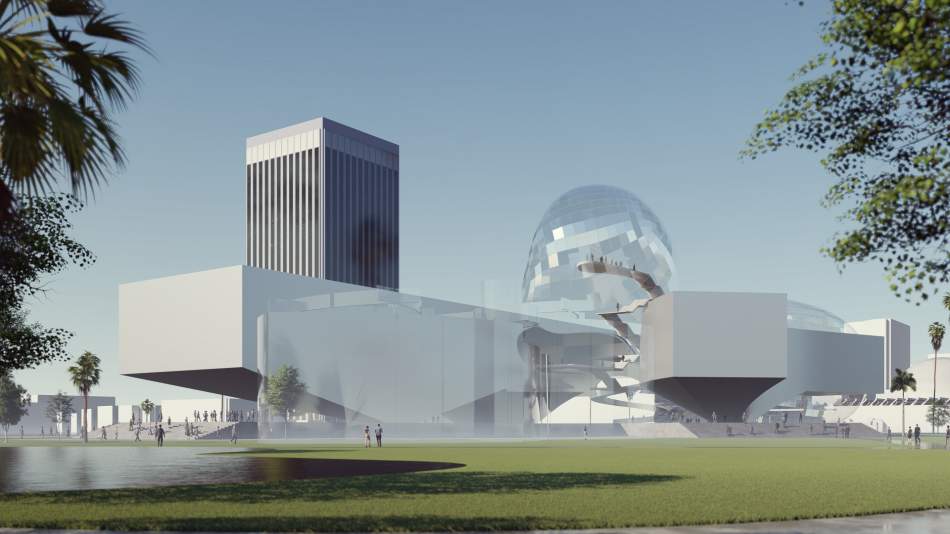Much to the chagrin of preservationists, demolition kicked off earlier this year at LACMA, where some of the museum's original buildings are making way for a roughly $750-million structure designed by architect Peter Zumthor. But even as work continues for the controversial revamp, a group formed in opposition to the project is fielding proposals for alternate schemes for the campus.
The group, called the Citizens’ Brigade to Save LACMA, has unveiled six leading concepts in its "LACMA not LackMA" design competition, all of which will are available for viewing on the organization's website.
“Our call for ideas was to open and make pubic what has been a closed process, and to present alternatives that inspire and show a way forward for a LACMA that is improved, fresh, and practical, not reduced and compromised,” said writer and designer Joseph Giovannini, co-chair of The Citizens’ Brigade to Save LACMA, in a news release.
The Zumthor project, which has been in planning for a decade, has evolved from an amorphous, black structure inspired by the neighboring La Brea Tar Pits to a sand-colored concrete building spanning across Wilshire Boulevard. The changing design came with a higher price tag - growing from approximately $600 million in 2013 to $750 million in 2020 - and a smaller footprint. The new building will ultimately include less exhibition space than the structures it is intended to replace.
The alternate concepts - designed by Barkow Leibinger, Coop Himmelb(l)au, Kaya Design, Paul Murdoch Architects, Reiser + Umemoto, TheeAe - are each intended to address criticisms of the planned Zumthor building. Applicants were required to submit projects that:
- enlarge, rather than reduce, the exhibition square footage;
- build only on the current site, rather than bridge across Wilshire Boulevard;
- save money per square foot;
- provide flexible gallery interiors;
- retain back-of-house services, including curatorial offices and library, rather than placing them off site;
- tie the Resnick Pavilion and BCAM into the new museum and embrace the La Brea Tar Pits Park and Museum;
- use conventional construction methods rather than high-finish concrete; and
- maintain the formal continuity of LA’s Miracle Mile district along Wilshire Boulevard.
Here is a look at the six concepts.
“LACMA Wing” by Coop Himmelb(l)au, Vienna
Emphasizing “an architecture that combines functionality with aspiration,” Coop Himmelb(l)au designed three main elements: landscape plinth and two, three-level “floating” gallery wings. Public circulation on ramps connecting the volumes would be encased by expressive amorphous forms whose openness to the outside refreshes the museum visiting experience. These public spaces are accessible without a ticket to the museum, but windows into the galleries are meant to entice people inside. The jury appreciated the curatorial flexibility of generous gallery spaces, with 22-foot floor-to-ceiling heights, the possibility of mezzanines and intimate galleries, and open floor plates. “This entry combines issues of great efficiency with moments of drama,” noted the jury. “The ‘bubbles’ offer exciting spaces that celebrate the public realm while connecting to straightforward, practical, functional galleries in the wings.”
“Unified Campus” by Paul Murdoch Architects, Los Angeles
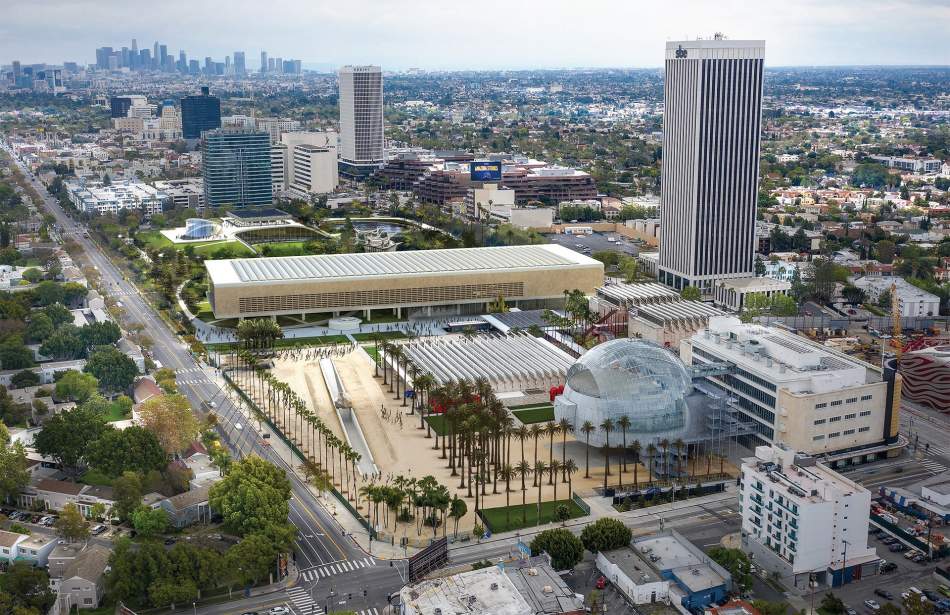
To create greater institutional cohesion, Paul Murdoch Architects took a holistic approach to the entire LACMA campus and its relationship to the cultural institutions flanking it. The design, according to the architects, is “expressive of LA in its openness, multiplicity of urban, natural, and cultural connections, and abundant use of controlled natural light.” The jury noted how this horizontal skyscraper—an on-axis version of the neighboring tower across Wilshire—corresponds to the urbanism of the area. “It restores the continuity of the Wilshire Boulevard streetfront with a respectful attitude by placing the narrow part of the building facing the street and the broad side framing the park.” The east glass façade offers a strong, complementary visual connection to Hancock Park and the La Brea Tar Pits, and the west façade forms a long public plaza bordered by BCAM and the Resnick Pavilion, uniting the two campuses.
“HILLACAM” by TheeAe (The Evolved Architectural Eclectic), Hong Kong
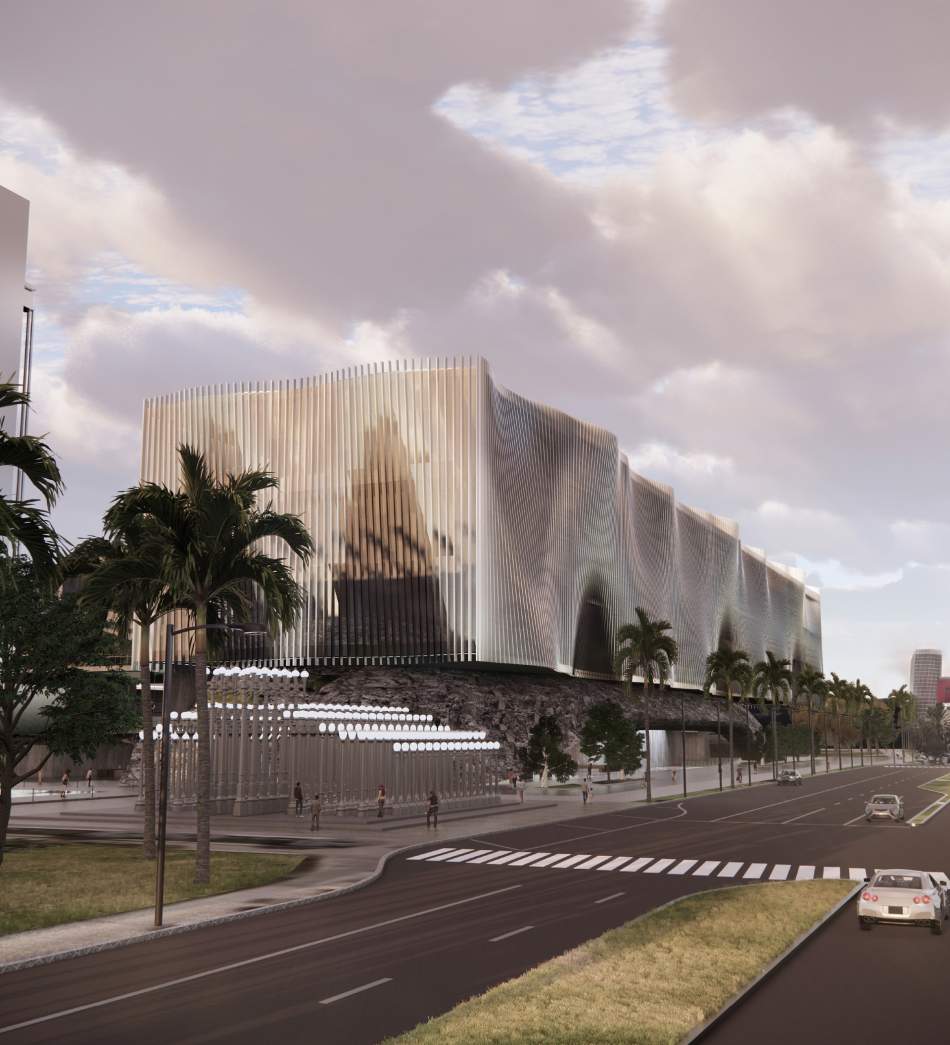
TheeAe (The Evolved Architectural Eclectic) considers Los Angeles’ diversity when proposing the museum as “a new cultural platform that connects people from different walks of life,” by simultaneously offering enclosed cultural spaces and an open, sculpted, outdoor landscape. The tall building (five levels plus garden roof) combines an undulating façade along Wilshire Boulevard to the south with “hill” element sloping into the park on the property’s north side. The jury remarked that the dramatic hybrid design would make it a “destination building” cleverly designed to sustain the urbanity of Wilshire on one side while extending the bucolic nature of the park on the other. “The Wilshire façade becomes a kinetic wall, imparting a strong urban experience that changes as you drive by, which is how most Angelenos experience the city,” noted the jury.” “The back façade, a built hillside, is a landscape event that adds a surprising new participatory dimension to Hancock Park. This will be a hill you want to climb.”
“Re(in)novating LACMA” by Reiser + Umemoto, New York City
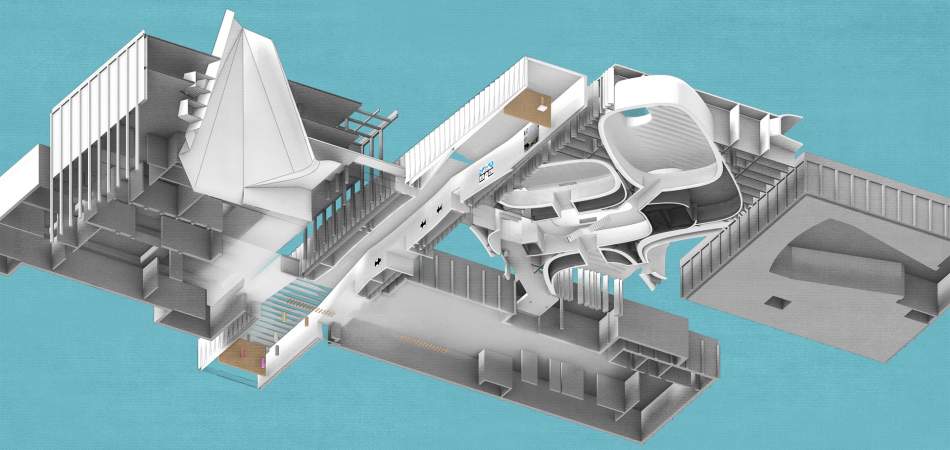
Reiser + Umemoto’s aim was “to create a coherent, retroactive masterplan that builds off the campus’ prior successes and seeks to engage and reinvigorate the full breadth of LACMA’s collection.” The three-pronged approach includes adding new elements in and around the original 1965 buildings, binding them into a new whole. The Cone sits within and atop the Ahmanson; The Bar, an elevated gallery building, transects the campus from north to south, offering an appropriately scaled Wilshire entrance and new gallery space; The Cluster replaces the 1986 building with a series of interior pod-shaped galleries, as well as exterior exhibition space on a reimagined plaza level. “The architects found a way to make the plaza into a connective tissue and strategically make the existing buildings work as an ensemble,” said the jury, which also commended the clear circulation that employed new interstitial spaces to move people through the building’s interior spaces.
“Tabula LACMA” by Barkow Leibinger, Berlin
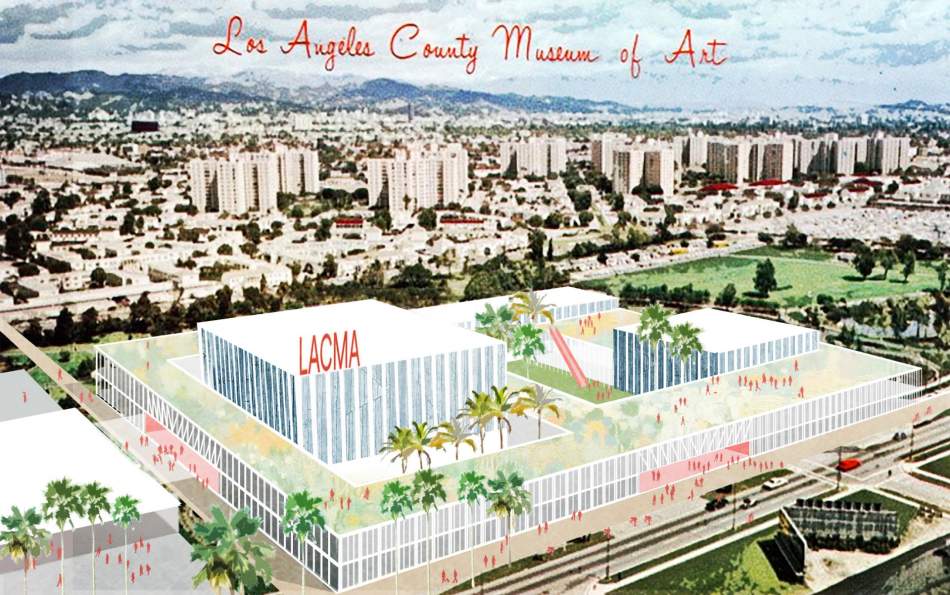
This “reconstitution” is an unusual hybrid of old and new, as it maintains the scale and context of the original LACMA buildings by reconstructing them with modern, sustainable materials, then interconnecting them with a new plinth form punctured by courtyards. Barkow Leibinger stresses this would “provide spaces for art, delight, and public encounter.” The jury thought this flexible, spacious design addressed the changing role of museums by including a good amount of shopping, cafés, and event venues that urbanize the spaces and engender a lively environment. “There’s a powerful idea of using the area around the pavilions to create a whole new programmed space,” according to the jurors. They enjoyed the rediscovery of the inner plaza and could “imagine these would be great spaces to be in, as well as fun to discover.”
“Reimagining/Restructuring” by Kaya Design, London
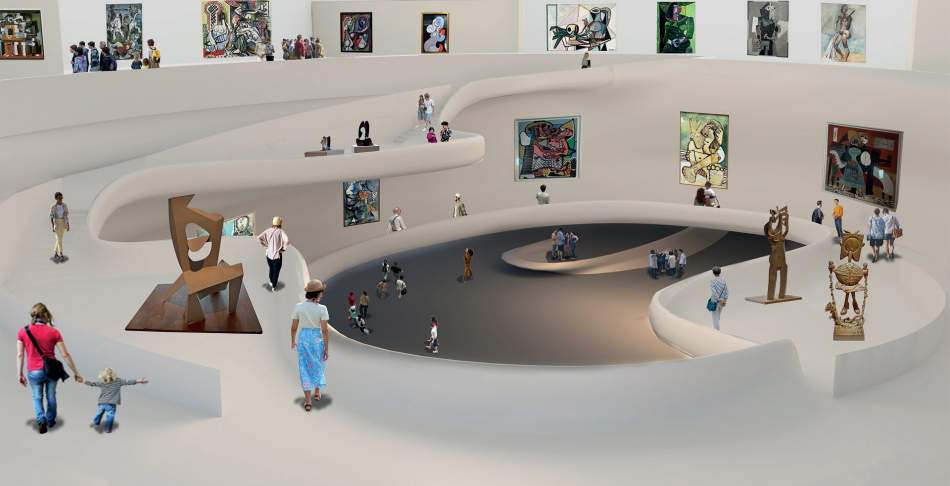
Replacing the 1986 building, Kaya Design proposes “to preserve the best elements of the past while creating a more contemporary, multi-use alternative space.” An elevated volume that respects the scale of the existing structures has solid walls on three sides for curatorial flexibility, then opens to the north with an all-glass façade. Circulation into the entrance is through a gentle ramp/walkway leading into the lobby that directs visitors to the other buildings on other floors—the ramps equalizing the importance of all adjacent floors. The new structure is reserved for exhibition space on six above-grade levels, including the interior of the spiral element. “This design achieves a considerable service to the campus, making the east campus more coherent than it’s ever been,” said the jury. “The biological form of the spiral—as ancient as seashells and hurricanes—gives value to the floors it connects.”
“This collection of six designs represents the ideas the jury found most compelling,” notes architecture writer and curator Greg Goldin, co-chair of The Citizens’ Brigade, in a statement. “We are not proposing any one of them be built as-is, but that the public, the museum board, and the County Board of Supervisors view them as inspirations to consider alternatives that truly capture people’s eyes, hearts, and minds, and showcase the collections in a practical and architecturally stimulating environment that embodies—rather than usurps—LACMA’s purpose and spirit.”
- LACMA (Urbanize LA)





